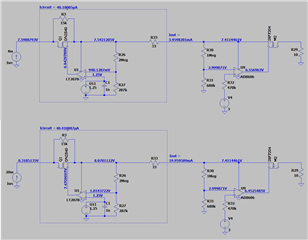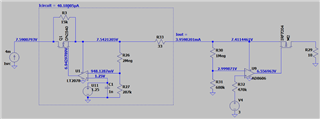Other Parts Discussed in Thread: TLV271, TLV07
Tool/software:
Dear all,
I have a circuit much like what it is on this page - https://e2e.ti.com/support/amplifiers-group/amplifiers/f/amplifiers-forum/806016/tlv27l1-unstable-performance
The source is a constant current 4~20mA from the left (Q3_p2), while the voltage on the right (Q3_p3) is fixed - when Isrc is 4mA, V_Q3_p3 is ~7.4V, when Isrc is 20mA, V_Q3_p3 is ~8.0V.
With Isrc within 4~20mA, output of U1 is always high (close to rail) as V- is less than V+, but we are observing that the consumption of the circuit is higher (40~70uA) when Isrc is lower (at 4mA), and consumption is lower by 30uA when Isrc is higher (at 20mA). On some boards, we are seeing >100uA, and just by swapping U1, we are able to reduce the consumption by 50uA.
Questions
1) What can the reason behind lower consumption (25uA less at higher Vdd)? Graphs provided in datasheet is showing otherwise.
2) We hope to reduce the number of reworks in production to fix the extra 50uA consumption of some op-amp, the results showing current consumption spread of 40~70uA, with a lot more exceeding 80uA. The data spread does suggest part to part variations, but we hope to confirm it.
Thanks,
SoonYet









